Last Updated on February 15, 2024 by Marian Jones
This episode – the last in the Bath series – takes you on a day out to Glastonbury, home of the Abbey Ruins, Glastonbury Tor, the King Arthur legends and one of the country’s most unusual high streets. Find out what happened to destroy the abbey, why a tree from Glastonbury was on Britain’s Christmas stamps in 1986 and what starring role the town played in the opening ceremony for the 2012 London Olympics.
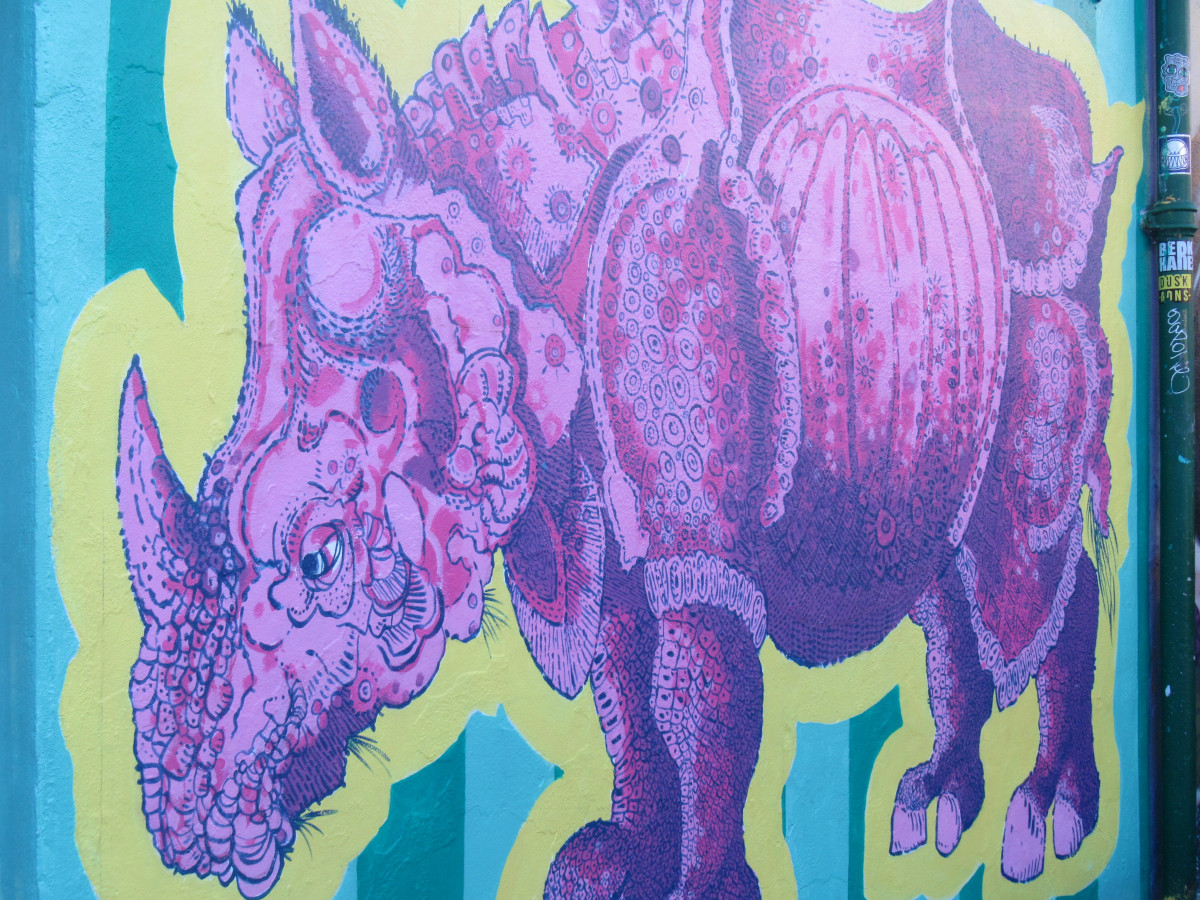

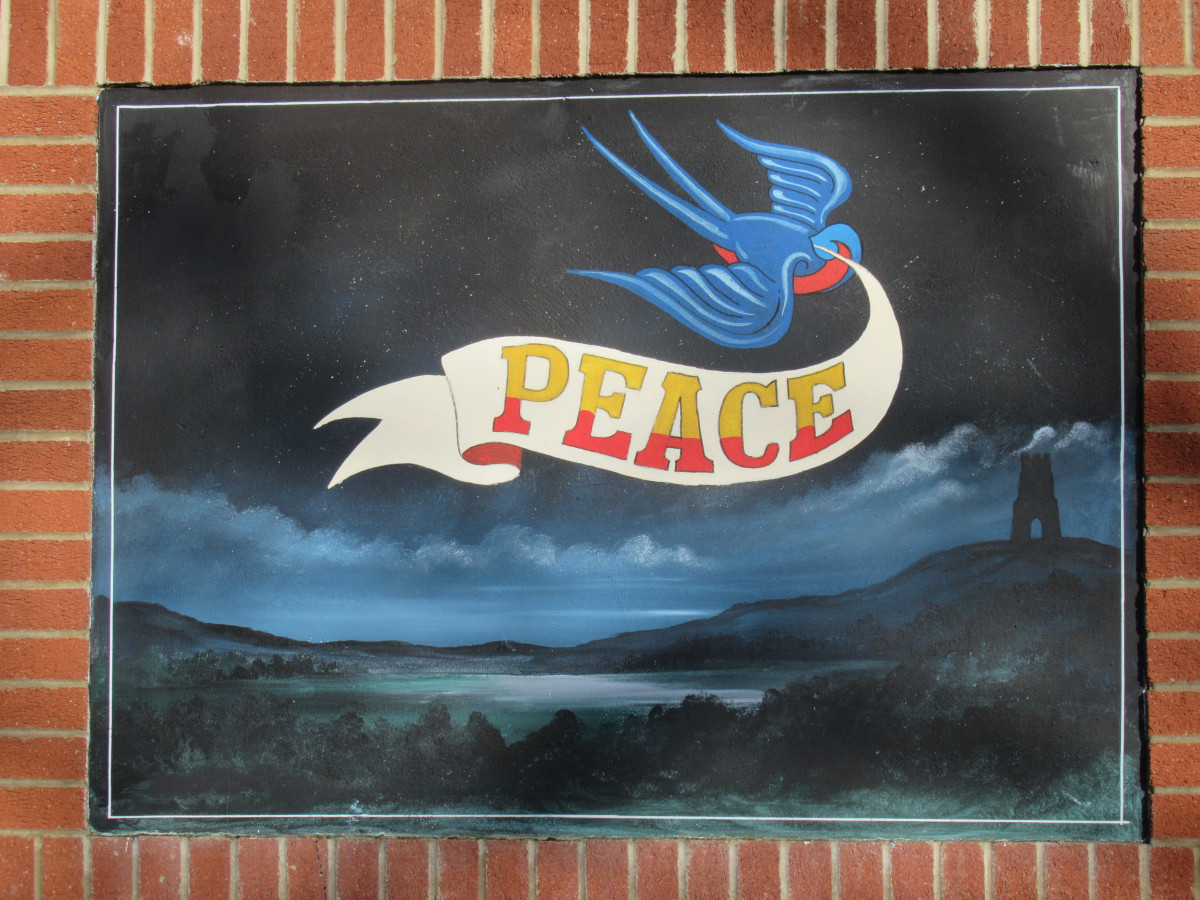
2 glastonbury legends
Legend has it that Joseph of Arimathea, who is recorded in the gospels as having buried Christ’s body after the crucifixion, was the keeper of the Holy Grail – the cup which Jesus used at the Last Supper – and that he took it to Glastonbury. It is said to have been buried just below the Tor, causing holy spring water to flow out from the spot now known as Chalice Well. The legend also has it that Joseph and 12 of his followers established the first monastery at Glastonbury and that he was buried there.
Another legend is that Camelot, the court of King Arthur, a 5th century warrior king, was at Cadbury, about 20 miles from Glastonbury. In 1191, the monks at Glastonbury claimed to have found a tomb at their abbey where Arthur and his queen, Guinevere, were, as they wrote, ‘encoffined in a hollowed oak’. Some historians believe they staged this in an attempt to boost funds after a disastrous fire at the abbey in 1184. Whatever the truth, the coffin lay in pride of place at the abbey for 300 years until it disappeared when the abbey was ransacked during the dissolution of the monasteries.
glastonbury abbey

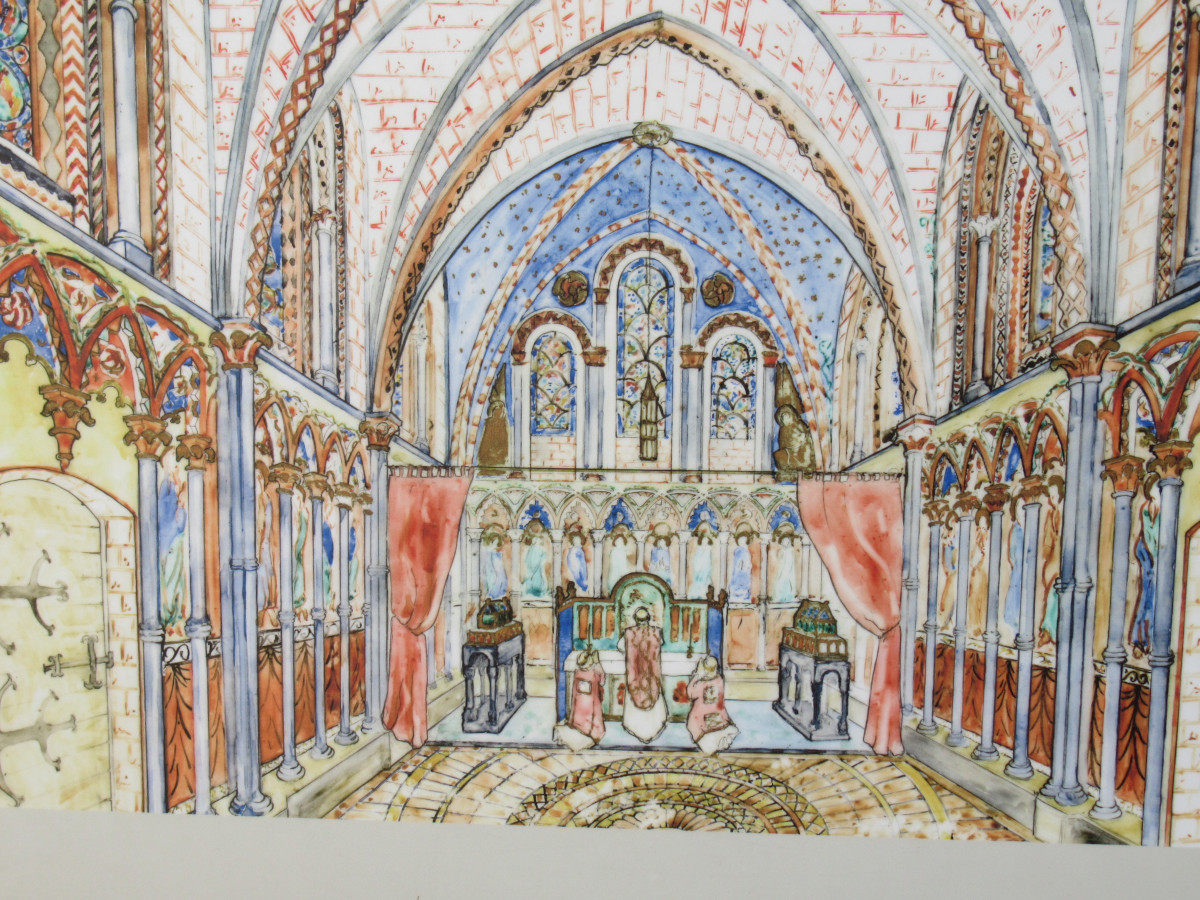
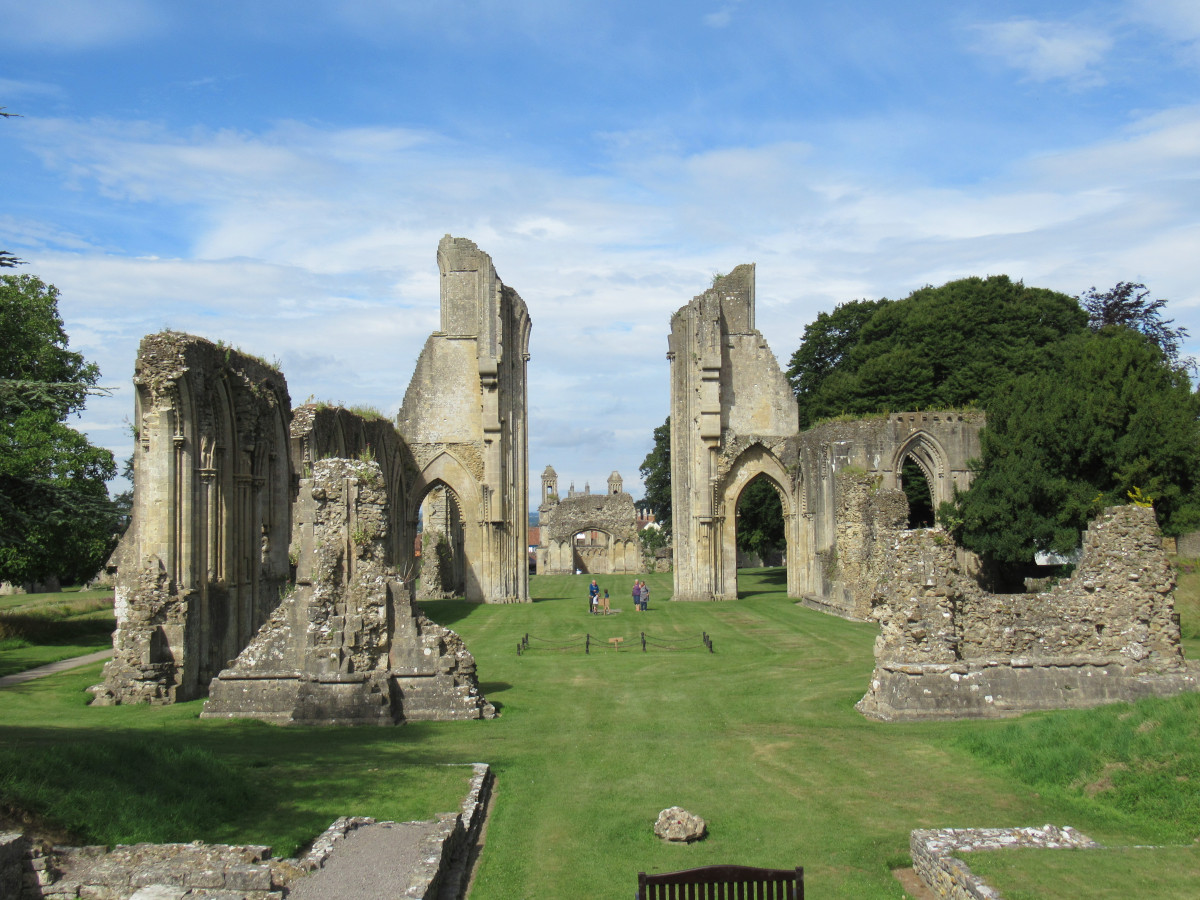
Today, Glastonbury Abbey is in ruins. The Saxons built a church on this site in the 7th century. It was enlarged in the 10th century by Abbot Dunstan, later the Archbishop of Canterbury and a saint. After 1066, the Normans enhanced the building much further, adding sculptures and decorating it in rich colours. It’s listed in the Domesday Book of 1086 as the richest abbey in the country and even in 1497, when Henry VII paid a visit, it was the second wealthiest after Westminster Abbey.
But it was destroyed by Henry VIII in 1536. The last Abbot, Richard Whiting, refused to surrender to the king and he was dragged through the streets to the Tor to be hanged, drawn and quartered as a punishment. His head was then stuck up over the abbey’s entrance as a warning to others. Most of the abbey’s valuables – lead, stained glass, bells and precious books and manuscripts were looted and destroyed. So ended a thousand years of worship on this site, but there is enough left of the abbey to make it worth visiting its ruins today.
The most complete part remaining is the Lady Chapel, where Arthur’s tomb is said to have been found and which was called at the time ‘the holiest earthe of England.’ Pictures displayed inside show how it looked originally, painted in beautiful, bright colours. You can make out the original cross-shape of the building from the parts still standing. Also on the 36 acre site you can see the ponds, orchards, herb garden and the Abbot’s Kitchen where meat was roasted on spits and bread baked in the ovens. The Rule of St Benedict insisted the abbey should be self-sufficient ‘so that the monks have no need to wander round outside it, for that does not profit their souls at all.’
In the attached museum is a lot of information on the life the monks led here in the abbey, on the dormitories where they slept, the food they ate, their daily meetings in the Chapter House, their library of 500 precious books, the scriptorium where they studied and copied manuscripts and the fairs they held on feast days.
glastonbury tor and chalice well
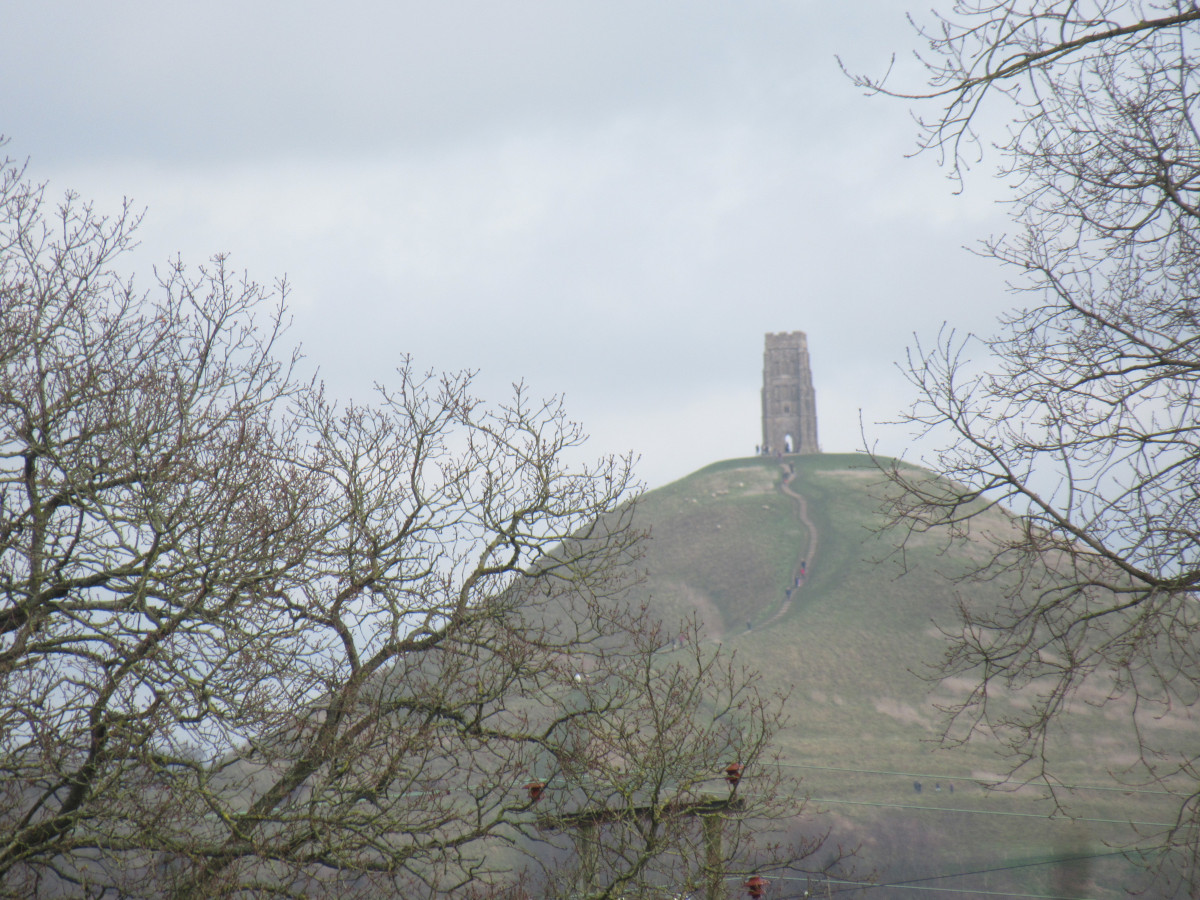

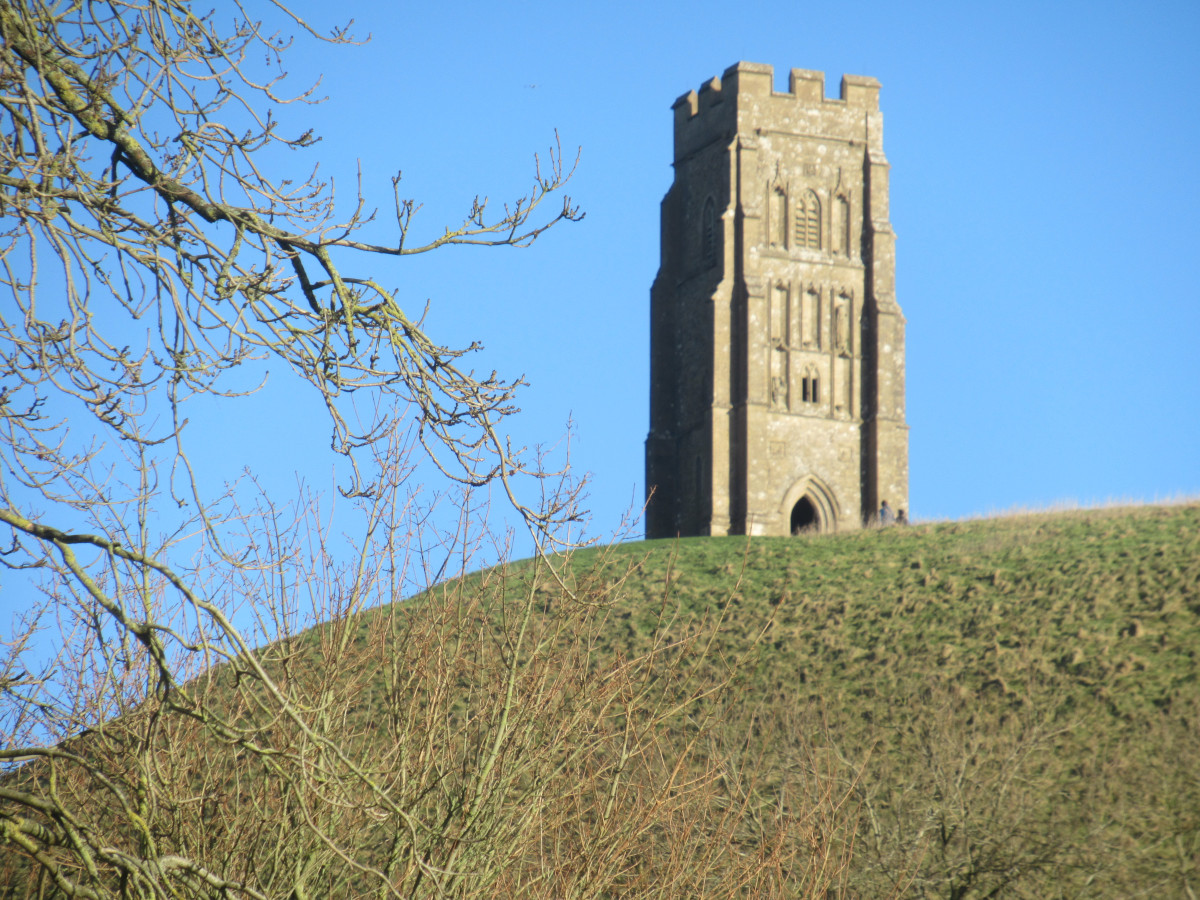
Glastonbury Tor sits atop a little hill – some 520 feet high – which overlooks flat marshland in all directions. It’s a dominant feature of the area, with views over the Quantock Hills and out to the Bristol Channel. It is revered by both Christians – who have built at least 4 churches on its summit – and by pagans, because of the myth that it was the home of the Celtic Winter King. Up at the top stands St Michael’s Tower, all that remains of the 14th century church which was destroyed under Henry VIII. It was a beautiful building, with stained glass windows and an altar made of Purbeck marble.
A Glastonbury guidebook describes the site as a mystical place, with a ‘rich history of spiritual pilgrimage, magical healing energies and sacred sites’. It’s important to Britain’s goddess movement who lead an annual procession up to the top. And a model of Glastonbury Tor – minus St Michael’s Tower – was a prominent feature of the Opening Ceremony for the 2012 Olympic Games, when the athletes paraded past it, pausing to place their national flags on it.
The Chalice Well site is at the foot of the Tor, where, according to legend, holy water began to flow when Joseph of Arimathea buried the Holy Grail there. For some, the site is on the spot rumoured to be the entrance to the underworld, for others the water which flows there is ‘an expression of unbounded life force’. Today, it is a set of gardens where you can see – and drink – the spring water, which is a reddish colour because of its iron content. The site is run by the Chalice Well Trust whose stated aim is ‘to be a place to heal mind and body through the agency of the spirit with the cooperation of nature’.
It’s said that when Joseph of Arimathea came to Glastonbury, he climbed this hill just outside the town and, exhausted, threw his staff to the ground and lay down to rest. The staff took root and the Holy Thorn grew out of it. It grew there for centuries and was highly unusual in that it flowered at Christmas. Recently, after it was vandalised, cuttings were taken and planted at other Glastonbury sites, including in the grounds of the Abbey, where you can still see it today. A cutting is taken by local schoolchildren every Christmas and sent to the monarch. The Glastonbury Thorn Tree featured on Britain’s Christmas stamps in 1986.
glastonbury high street

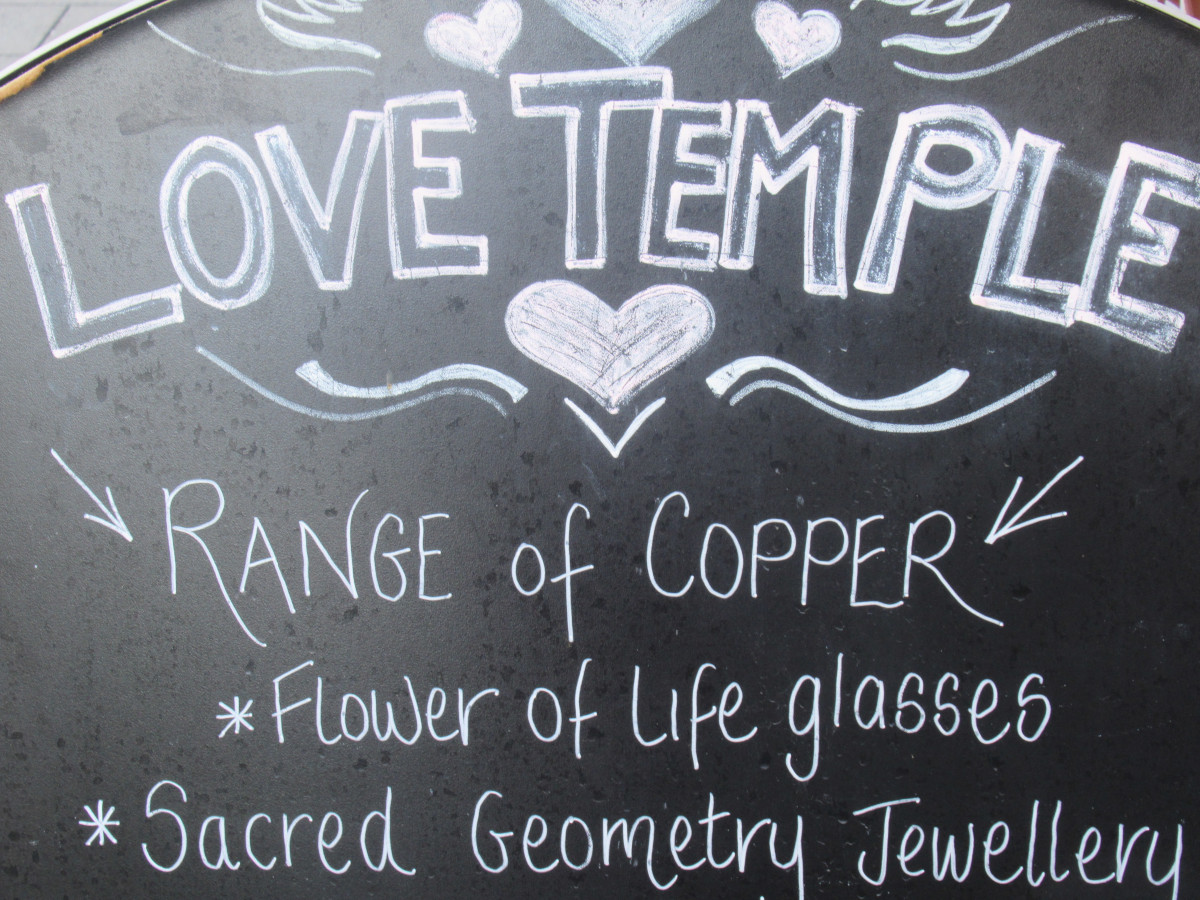
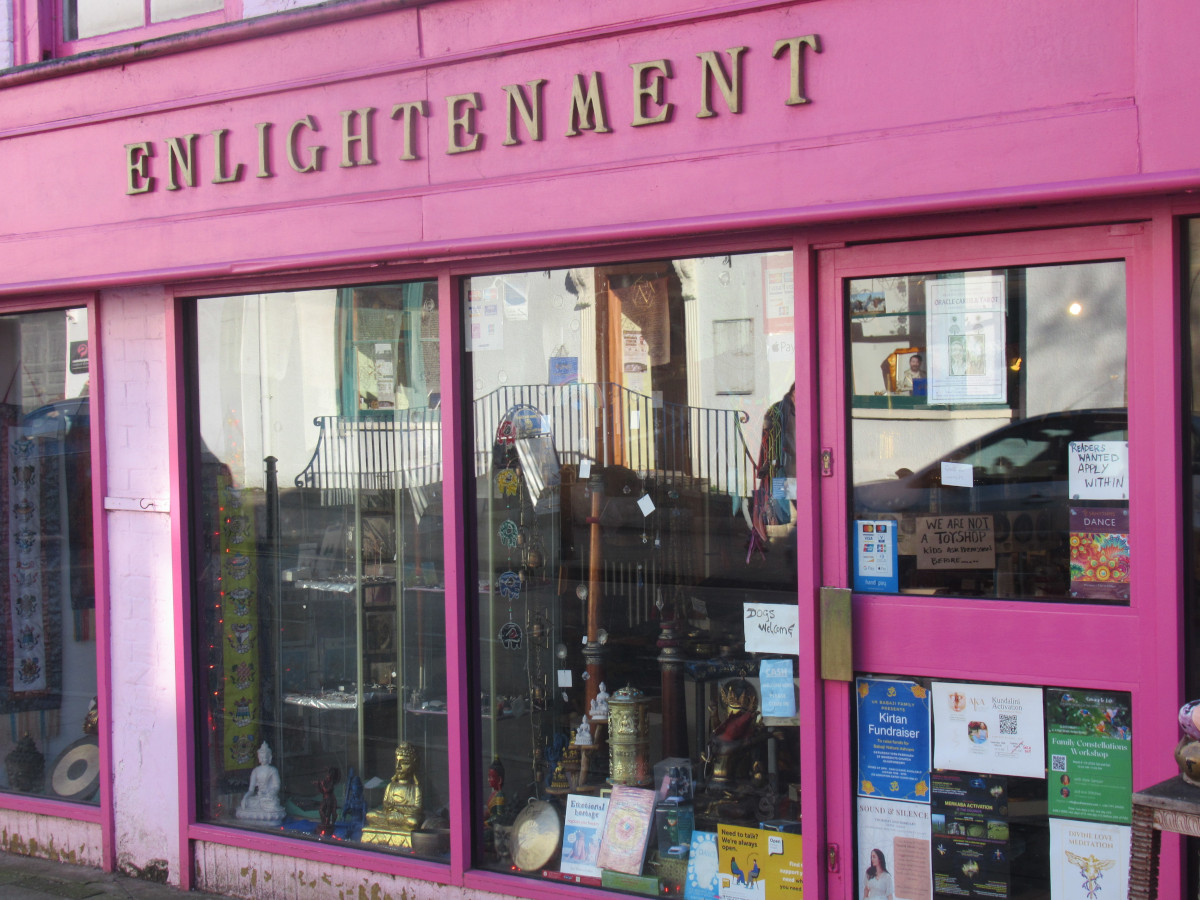
A wander up Glastonbury High Street and its little side streets will take you to many unusual establishments. The shops have names like Crystals, Harvest Moon and Enlightenment, you can buy ‘essential oils’ and ‘spellcraft supplies’, you can have a ‘palmistry reading’ and choose from a number of vegan cafes and restaurants. You will see signs to the ‘goddess temple’ and the ‘miracles room’ and come across the vibrant pictures from the Glastonbury murals trail whose artists explain that they wanted to depict ‘the common threads that inspire both residents of and visitors to our one and only Isle of Avalon: modernity and spirituality, the Earth, our land and our heritage.’ Glastonbury, in short, is unique!
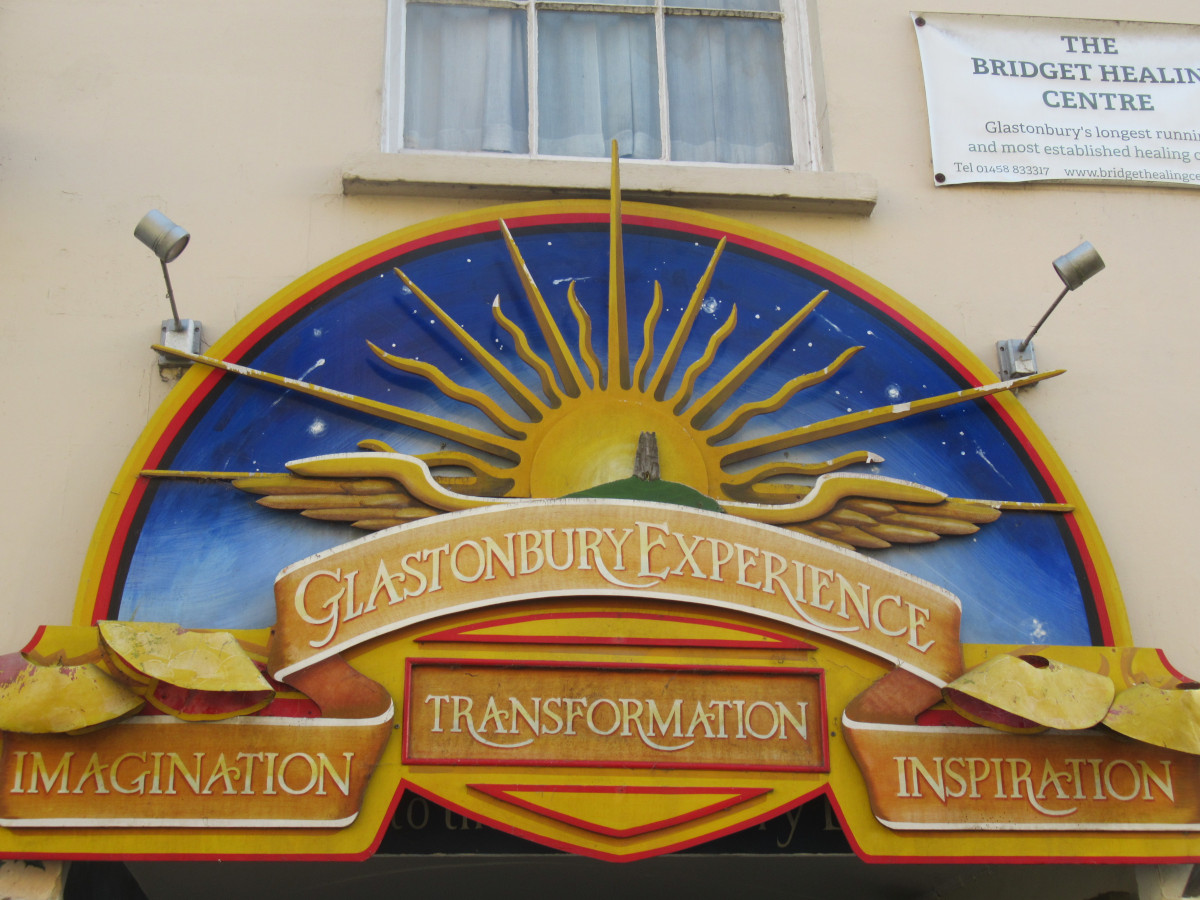
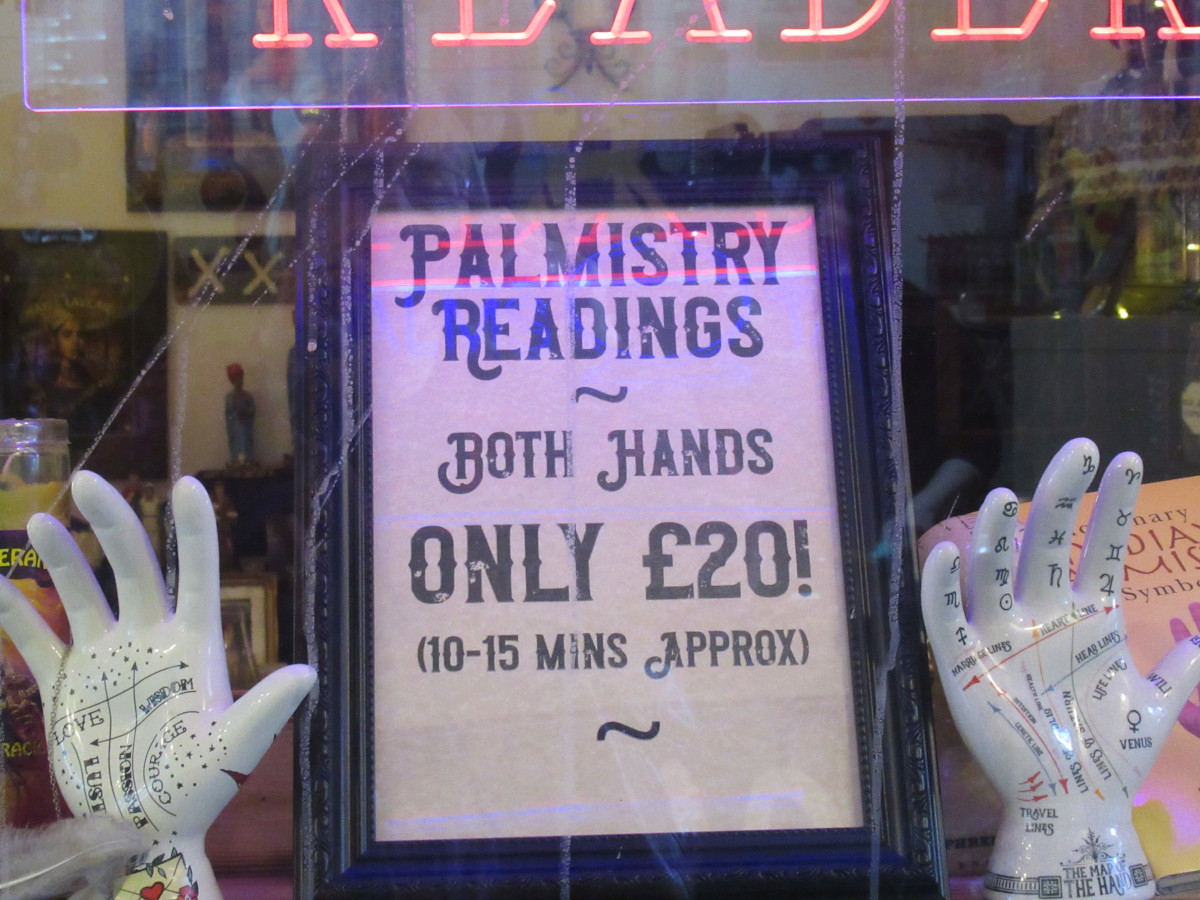
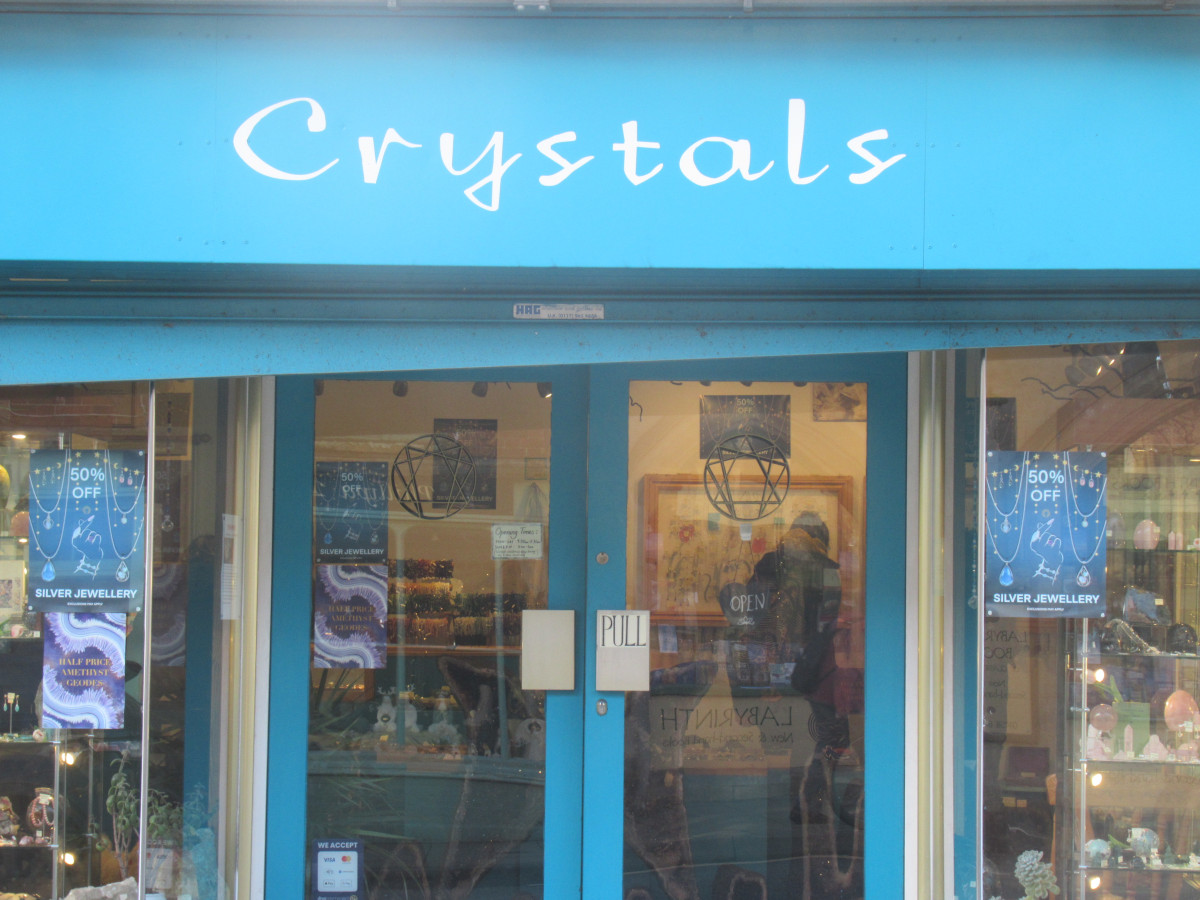
wearyall hill and glastonbury thorn
It’s said that when Joseph of Arimathea came to Glastonbury, he climbed this hill just outside the town and, exhausted, threw his staff to the ground and lay down to rest. The staff took root and the Holy Thorn grew out of it. It grew there for centuries and was highly unusual in that it flowered at Christmas. Recently, after it was vandalised, cuttings were taken and planted at other Glastonbury sites, including in the grounds of the Abbey, where you can still see it today. A cutting is taken by local schoolchildren every Christmas and sent to the monarch. The Glastonbury Thorn Tree featured on Britain’s Christmas stamps in 1986.
Listen to the POdcast
Reading suggestions
Isle of Avalon by George Wingfield by George Wingfield
Normal for Glastonbury: Life in England’s Most Magical Town by Vicky Steward
links for this post
Glastonbury Abbey
Chalice Well
Previous Episode A Day Trip to Wells
This is the last episode in the Bath series





